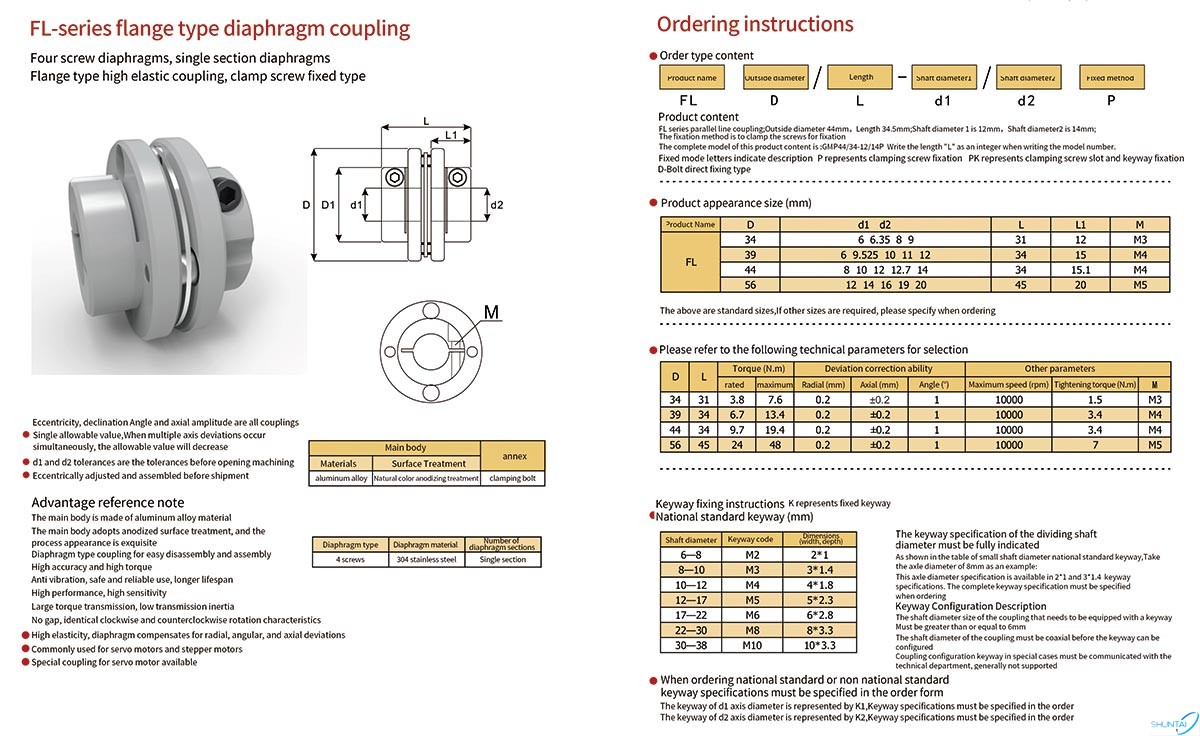A coupling is a mechanical device used to connect two shafts, or a shaft and a rotating device, to transmit power and torque, and to allow relative motion between the shafts.
Name :
shaft couplingColor :
greyPlace of Origin :
Jiangsu, ChinaMaterial :
Stainless Steel, SteelBrand Name :
Jinling ShuntaiFlexible or Rigid :
Flexible
Please watch the video of our couplings

Please view the data sheet of our couplings


Couplings play a key role in a variety of industrial and mechanical applications, with key uses including:
1. Mechanical transmission: Couplings are widely used in mechanical transmission systems, such as the connection between motors and pumps, fans, reducers, conveyor belts, etc. It transmits rotational motion and torque to ensure the coordinated operation of various components.
2. Alignment compensation: When there is a slight misalignment or offset between the two shafts, the coupling can provide a certain degree of elasticity and flexibility, compensate for the misalignment between the shafts, and reduce the resulting vibration, noise and wear and tear.
3. Friction transmission: Certain coupling types, such as friction couplings, use friction to transmit power. They are commonly used in clutch and brake systems, such as automobile clutches, brake pedals, etc.
4. Torque limitation: The coupling can also be used as a torque limiting device. When the system reaches overload, the coupling can slide or disconnect to protect the system and equipment from damage.
5. Vibration and shock absorption: Some coupling types have elastic elements, such as rubber sleeves, springs, etc., which can absorb vibration and shock. This is important for reducing shock loads on the system, reducing fatigue on machine components and extending equipment life.
6. Environmental adaptation: the coupling can also be used under different environmental conditions. For example, some couplings are suitable for high or low temperature environments, and couplings made of corrosion-resistant materials are suitable for corrosive media, etc.
In short, couplings are widely used in various industrial fields, including manufacturing, energy industry, transportation, metallurgy, chemical industry, etc. Its role is to connect and transmit power, while solving alignment and misalignment problems between different shafts, ensuring smooth operation of the system and component protection. Selecting the proper coupling type and specification is critical to system performance and operational safety.
